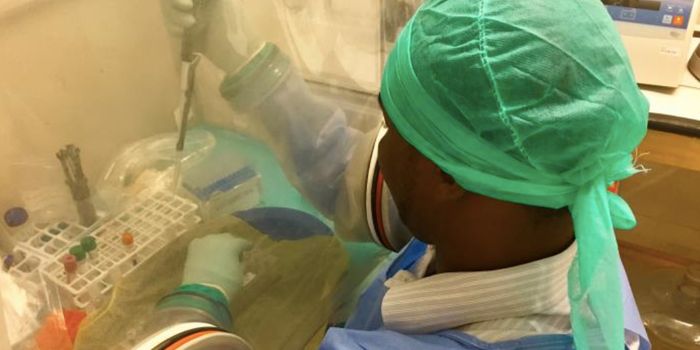Improving the Detection of Fragile-X Syndrome
Repeat sequences are common in our DNA, and are known to cause human disorders. In particular, a triplet repeat on the X-chromosome is associated with Fragile X syndrome, a collection of abnormalities linked to intellectual disabilities and autism.
Because this disorder is a result of repeating nucleotide triplets, diagnosis hinges on knowing precisely how many repeats are present in the patient’s DNA. But current technologies make accurate genetic diagnosis for Fragile X Syndrome (FXS), and other repeat disorders, are complicated and expensive. Now, researchers at the National Institute of Health have unveiled platform that overcomes these obstacles, providing accurate FXS diagnoses in less than 24 hours.
In FXS, the trinucleotide repeat (CGG) is located in the FMR1 gene (aptly named as the fragile X mental retardation 1 gene). For FXS and other repeat disorders, the range of clinical severity is directly associated with the repeat length. Although the exact number of repeats in each range is not concrete, we know that people with between 5-40 repeats do not manifest any symptoms and are considered normal. Patients that have greater than 200 repeats are considered to have a full mutation and clinically develop FXS. However, patients that do not have that high repeat threshold but are above the normal repeat threshold, i.e. between 55-200 CGG repeats, are considered carriers of the permutation and develop Fragile X Tremor/Ataxia Syndrome.
Another important characteristic of these disorders is the instability of these triplet repeats. This means the repeats often increase in length when transmitted to successive generations. Thus, there is genetic anticipation for triplet repeat expansion diseases, making it imperative for patients to know if they are carriers or not.
"Careful analysis of the total number of repeats, the number of interruptions in the repeat tract, and the methylation status of the FMR1 gene is important for a proper understanding of an individual's risk of transmission of larger alleles to their offspring and to their personal risk of disease pathology. It is also critical for addressing a number of important research questions," said Karen Usdin, scientist at the NIH and senior author of the study.
Current tests that attempt to amplify the long triplet repeat tracts are difficult and time-consuming. But with the new assays developed by Usdin and her team, the tests are robust enough to amplify up to 1,000 repeats even in samples that have a mixture of different alleles. Furthermore, accurate triplet repeats can be assayed in under 24 hours. In addition, "The basic assays for repeat number, methylation status, and the number of uninterrupted repeats cost less than $5, the mark typically considered the threshold for population-based screening," said Bruce Hayward, first author of the study.
The team hopes this assay will also be beneficial to researchers interested in the effect of repeat length in embryonic development and gene expression. It would also be interesting to know if a similar test can be applied to other repeat disorders, like Huntington’s disease.
Additional source: EurekAlert!









